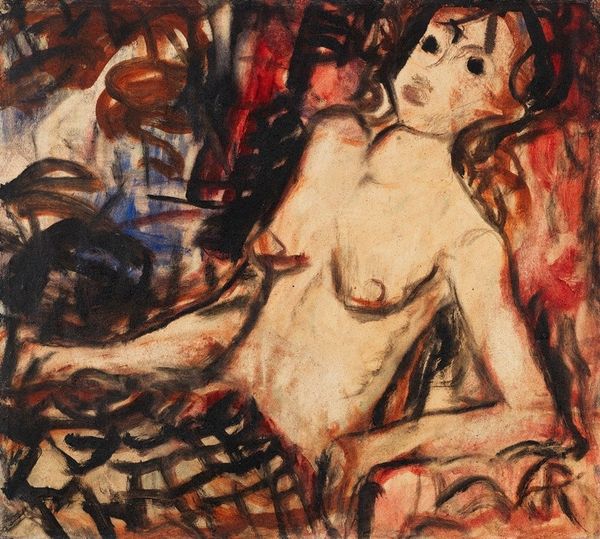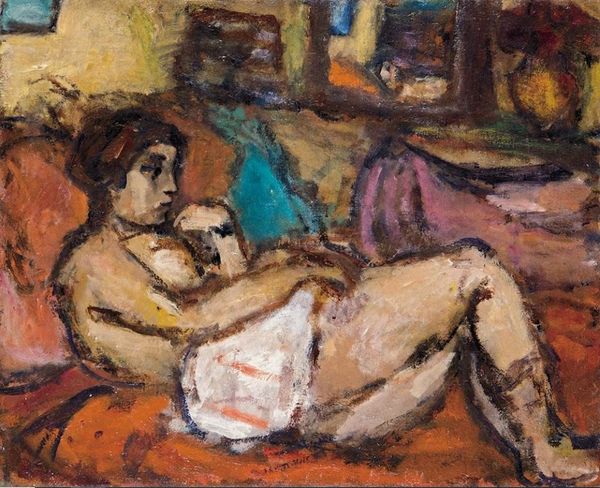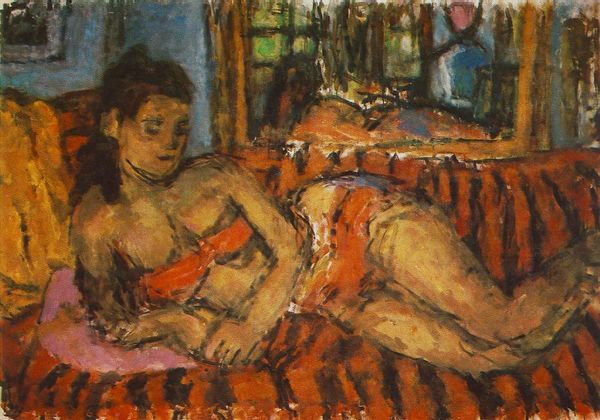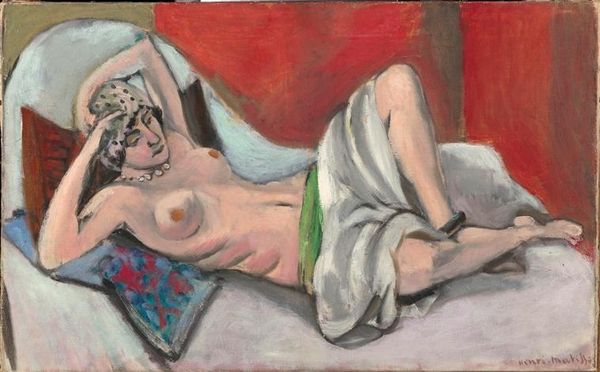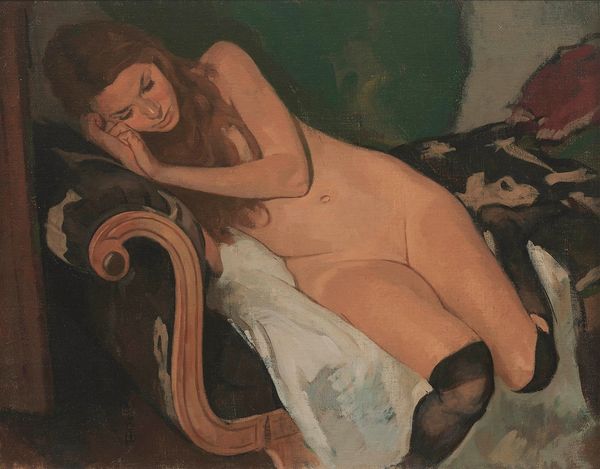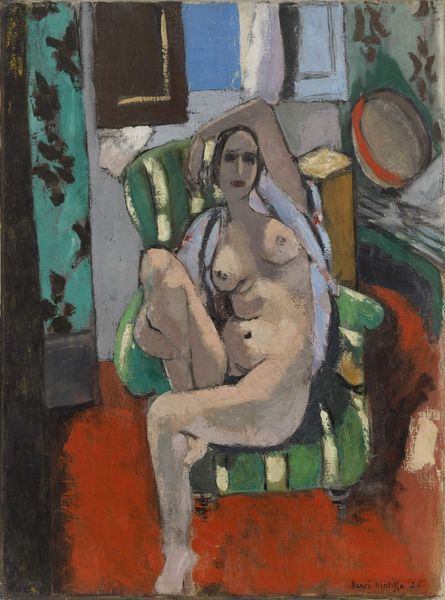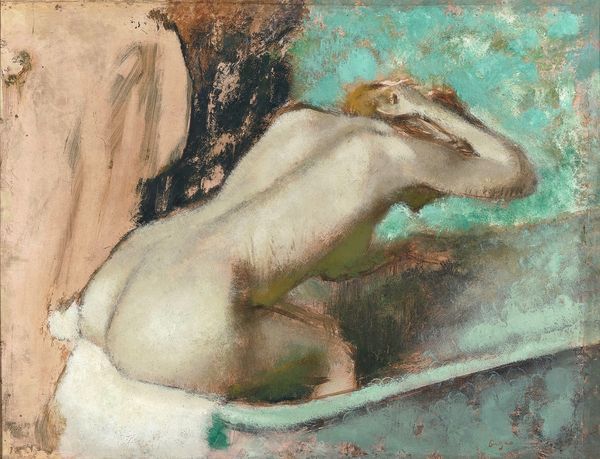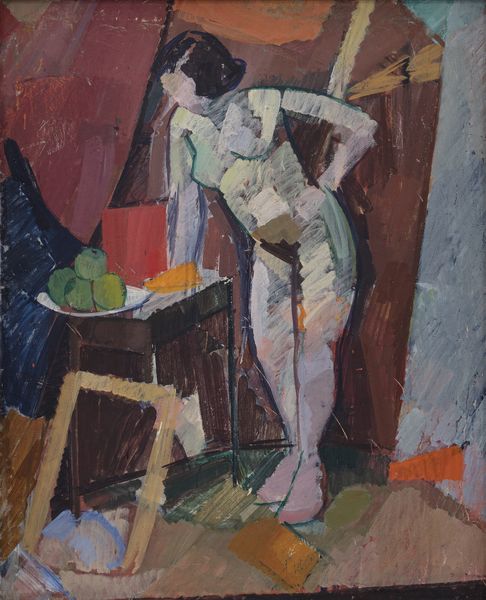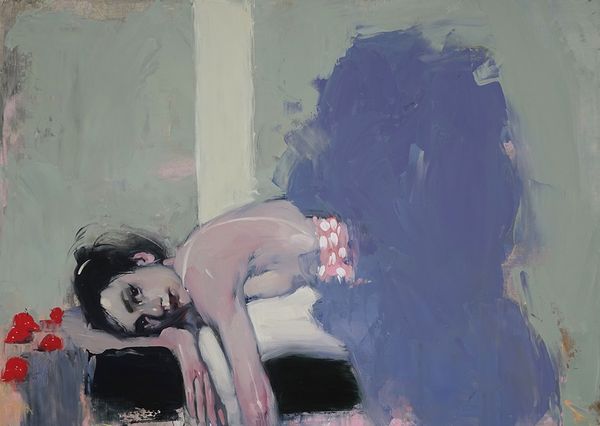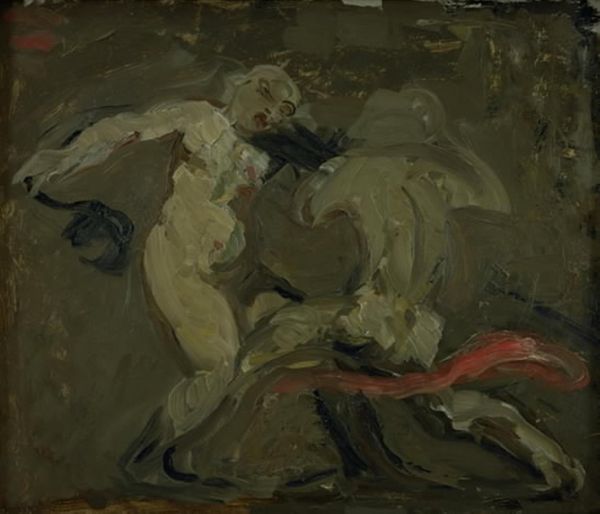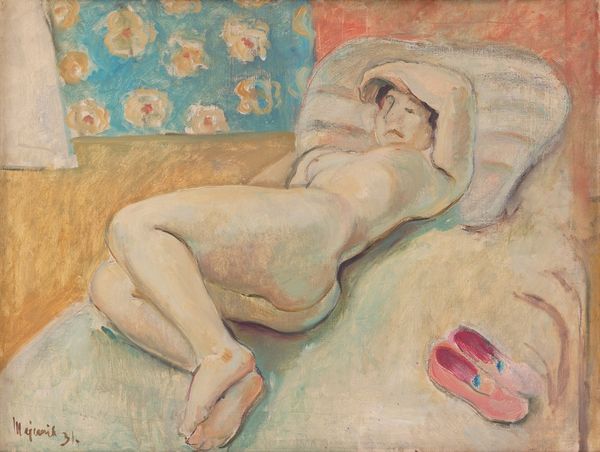
Copyright: Arthur Beecher Carles,Fair Use
Curator: We are looking at "Reclining Nude," an oil painting completed by Arthur Beecher Carles in 1935. What are your initial thoughts? Art Historian: The composition strikes me as a collision between Romanticism and something altogether more… personal. It feels like an intimate, almost private scene, yet styled with classical allusions of Romanticism. There's an undercurrent of melancholic sensuality to it. Curator: I agree about the tension, but I find that Carles balances it meticulously through color. The impasto technique adds depth and tactile quality, almost obscuring any concrete form through bold painterly strokes. Note how his rendering rejects conventional mimetic strategies to generate expressive value. Art Historian: Indeed, the brushwork is very emotionally evocative. Do you think its exhibition history played a role in defining our appreciation of Carles's treatment of the female nude in the broader American art discourse of the 1930s? It surely challenges traditional patriarchal representations of the subject. Curator: The figure melts into the surrounding shapes through tonal modulations—witness, for instance, the figure’s limb emerging indistinguishably from a flower that is positioned next to it, but which, visually, serves almost as an extension of her lower extremity. It calls into question boundaries in the most radical terms. Art Historian: Carles's "Reclining Nude" presents a challenge to the ideal body politic propagated through commercial art. One might consider whether the semi-abstract presentation served as a statement, perhaps critiquing the social objectification of women even as he depicts the nude form. Curator: Undoubtedly. Carles here deploys distortion toward aesthetic ends. These techniques effectively draw the viewer into a self-reflexive consideration of art’s illusions—it becomes clear we're in the presence of nothing but the pigment on its substrate, deployed according to pictorial laws. Art Historian: His method really provides commentary not only on the represented figure but on cultural norms related to displaying women and the body in general during that era, especially amid economic hardships. "Reclining Nude" goes beyond pure representation and serves, at least, to start relevant conversations. Curator: Overall, "Reclining Nude" underscores the emotive power inherent to color and formal arrangement. I would like to propose further study into the complex chromatic relations contained within Carles's visual language in later dialogues. Art Historian: Agreed, its public presentation reveals so much regarding institutional acceptance of the modernist aesthetic and representation of bodies in an evolving sociopolitical sphere. It warrants ongoing, nuanced dialogue.
Comments
No comments
Be the first to comment and join the conversation on the ultimate creative platform.
